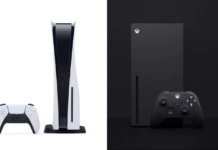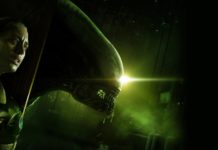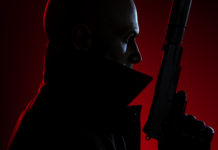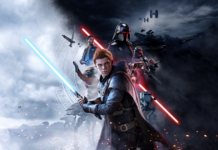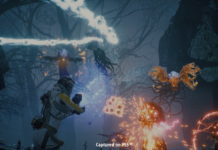Advanced Media Network received its review copy of the anticipated Metroid Prime 3: Corruption for Wii today. Below, you’ll find site editor-in-chief Phillip Levin’s impressions based off his first few hours with the game.
Ever since Nintendo announced and unveiled the Wii’s unique motion-sensing controller, the industry has speculated about how the pointer-esque remote would affect first-person shooters and first-person games in general. At Wii launch, a few first-person shooters launched only to leave many with a sick feeling in their stomachs. Even outside the realm of first-person games, few games used the Wii-mote and nunchuck attachment in a way that truly made me feel like the duo were a step forward for gaming. Hands down, The Legend of Zelda: Twilight Princess was the number-one example of why the Wii and its controller could change gaming for better.
But now there might be a new game on the block that utilizes the Wii-mote in a fashion that’s even more impressive, Metroid Prime 3: Corruption. The title, which is the third and final game in the Metroid “Prime†series, follows directly after the second game in the trilogy. A number of questions linger in the air, ones related to Dark Samus, the mysteriously powerful Phazon chemical and more. Corruption, we hope, will answer those questions.
The first thing that’s immediately different about Prime 3 in comparison to its two predecessors is its controls – no surprise. I’ve barely logged a few hours with the Wii debut of the Metroid franchise and already, I am confident in saying that the Wii-mote controls work very well. They are not perfect, but just about every control issue that plagued the multiple Metroid Prime 3 demos I’ve played leading up until the final game has been addressed. This means you can finally turn fast enough and aim accurately with little to no trouble. Initially, the controls do feel a bit unusual – and I imagine this will be especially true for those who have never played a Wii first-person game (shooter or otherwise). But soon enough, I felt at home with the Wii-mote and nunchuck in hand, and dare I say it, the setup is reminiscent of a keyboard/mouse combo at times.
The newly added “Advanced†sensitivity control option makes a world of a difference. I started off playing on “Normal,†but I eventually switched over. The difference is instantly noticeable: the advanced controls essentially increase the sensitivity of the on-screen reticule, thus allowing you to turn faster than on other settings.
Even the button layout of Prime 3 works incredibly well, but again not everything is absolutely intuitive. It does take some time to get the new configuration down, but once you have, you’ll be flying through rooms with little to no trouble. The default control scheme assigns shoot to A and jump to the B trigger, but for those who would rather shoot with a trigger (you know, like with a real gun) you can reverse the controls. I played around with both options, and I’m surprised to report I prefer the default control setup. It works just fine, even if it takes time to get used to jumping with the B trigger.
The differences between Metroid Prime 3 and its two predecessors goes deeper than the new Wii-fangled controls – the design of Prime 3 is distinctly different. Prime and Prime 2 drop players into alien worlds and rarely takes control away from them, leaving them alone to discover the underlying story. There are no in-game characters to interact with, no dialogue, no story-driven cut-scenes or many of the other fundamentals we associate with video game design. Prime 3, in this sense, is more like a contemporary video game. There are cut-scenes, which push forth the story, and there is dialogue to hear (and it’s voiced surprisingly well). What’s more, early in the game, there are even characters walking around Samus – a first for the Prime series. These things, although they sound admittedly simple, seem alien to see in a Metroid game. They’re not necessarily a bad thing, but I have to admit it is different to see a cut-scene with multiple characters conversing in a Metroid Prime title – even though this statement might sound a bit ridiculous to those unfamiliar with the Prime games.

Prime 3 begins inside Samus’ ship. The screen is littered in glowing-green computer screens, light-filled panels, alien symbols and buttons that beg to be pressed. Inside the ship, you can choose what parts of the galaxy to visit by selecting different locations and planets from the in-ship map system. The setup is unlike anything seen in any of the Prime games, but it definitely reminds of the disappointing Metroid Hunters on DS. Thankfully, five minutes of playing Prime 3 will convince you that this is no repeat of that Metroid title.
The opening level of Corruption takes place on the Federation spaceship GFS Olympus. Here, you become acquainted with the new controls, storyline and so forth. As an admitted graphics snob, I’m incredibly impressed to say that Corruption looks great. This is, by far, the best looking Wii game yet. And even though that’s not saying much, it’ll be a challenge for any software house to best Prime 3’s visuals. Sure, the next-gen technology isn’t here, but the art-direction wins – bottom line. Futuristic room structures, beautiful bloom lighting, diverse colors, pulsing lights and glowing computer screens make up the interior of the Federation ship (all at a silky-smooth 60 FPS). It’s hard not to look around in awe of how good-looking Prime 3 is. This is a gorgeous Wii game.
Inside the Olympus, you can talk to different Federation troopers. Unfortunately, most offer nothing more than one-liners. What sucks you into Metroid Prime 3 isn’t the character interaction – it’s the absorbing atmosphere and captivating progression of the world and level design that surrounds you. Each room calls your name louder than the last, and it’s hard to ignore a game world that’s practically screaming at you to keep looking around.

We won’t spoil what happens, but eventually you end up having to leave the Olympus for a nearby planet called Norion. The planet harbors a docking station that is under attack, and Samus must come to the rescue by restoring power generators throughout the docking station. Here, you explore destroyed hallways, often littered with the bodies of killed-in-action Federation troopers. Scanning the body of one particular marine, who passed away leaning up against the remains of a blown-away wall, reveals he died of severe Phazon burns, while another died of a heart attack. The docking station is composed of uniquely-designed rooms and features the trademark Metroid-style discovery and puzzle-based progression we love the Metroid franchise for. There is even some morphball action to be had, too.
After trudging through the ruined corridors and recently-attacked rooms, I managed to restore power to the three generators. Eventually, you square off with a familiar baddy: Meta Ridley. We actually played through this boss encounter at E3 2006, well over a year ago, but the fight is more polished and exciting in the final game.
I didn’t stop playing at this point in the game, but this is where our impressions will end. I don’t want to describe some of the other areas that closely follow the Olympus and Norion, as if you’re at all interested in playing Metroid Prime 3 (which you should be), the less you know about the adventure, the more you’ll enjoy it. We’ll be reviewing Corruption later in the week, but you don’t need to wait for our review to learn that this is a must-have for Wii owners.



